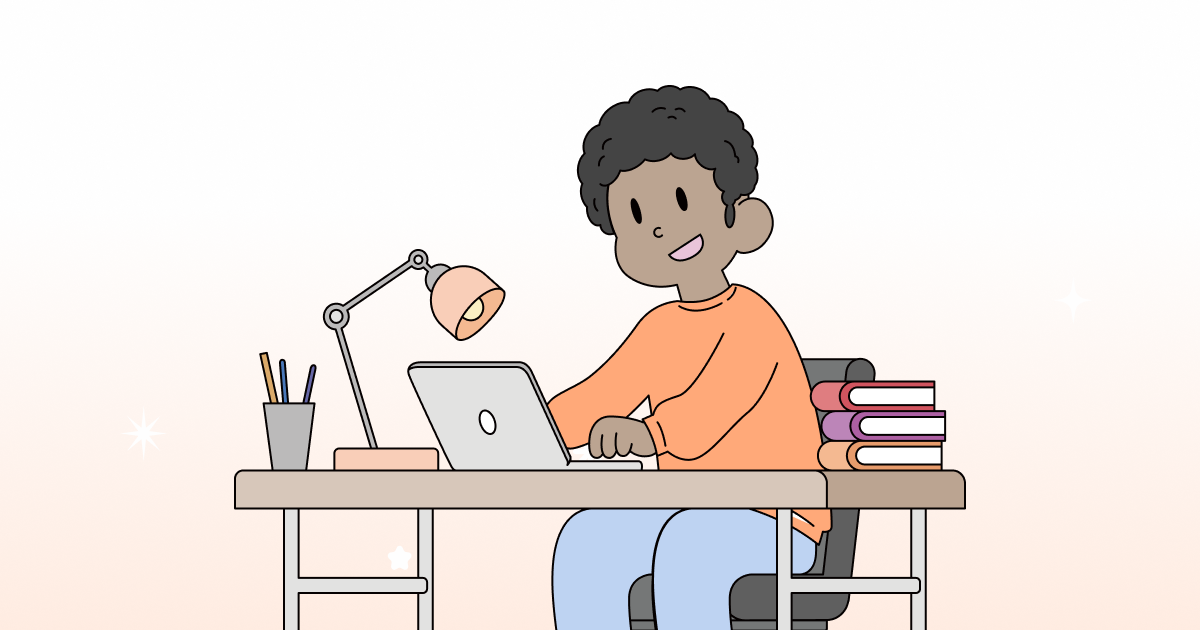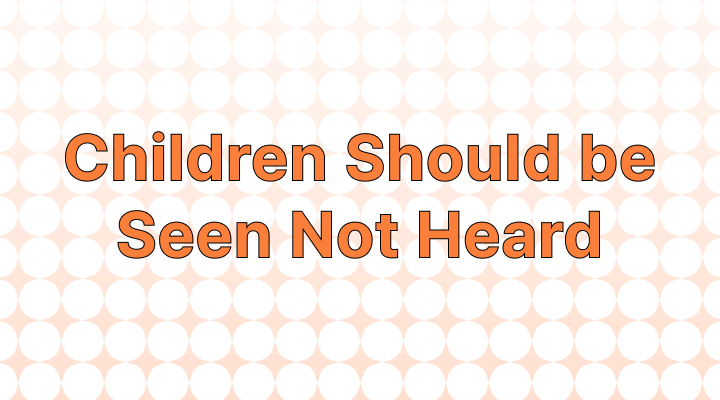- The idiom "children should be seen and not heard" conveys the traditional expectation that children should be quiet and well-behaved in social situations, emphasizing their role as observers rather than active participants in adult conversations or affairs.
Example sentences
- During the formal dinner, the parents insisted that their children follow the old saying, so the little ones sat quietly at the table, as the notion of "children should be seen and not heard" was ingrained in their upbringing.
- The teacher expected her students to adhere to the traditional belief of "children should be seen, not heard" in the classroom, discouraging unnecessary interruptions during lectures.
In 2022, children (aged 0-17) constituted 21.7% of the population, which is approximately one fourth of the population. Despite this, adults veiw children as being too young to vote, or have a voice in politics. This is not only reflective of the thoughts of today's society, but also harks back to the days when the phrase "children should be seen not heard" was first used.
What does "children should be seen not heard" mean?
Broader Meaning:
- Respectful listening: Children should prioritize listening to adult conversations and learning proper social decorum.
- Avoiding interruptions: Children should wait for appropriate moments to speak up and avoid disruptive outbursts.
- Obedience: In stricter interpretations, it emphasizes complete submissiveness and discourages any questioning or voicing of opinions.
The key takeaway:
- The meaning of "children should be seen and not heard" is not fixed, and interpretations vary depending on historical context, personal beliefs, and specific situations.

When to use the phrase "children should be seen not heard?"
- Formal Gatherings: In formal events, dinners, or ceremonies, where quiet and respectful behavior is expected, parents might encourage their children to be seen and not heard.
- Professional Environments: In workplaces or professional settings, parents might advise their children to maintain a low profile, avoiding disruptive behavior.
- Educational Settings: In classrooms or during lectures, the phrase may be used to remind children to listen attentively rather than being noisy or disruptive.
- Cultural or Religious Ceremonies: During religious services, cultural events, or ceremonies where a solemn atmosphere is desired, the phrase may be invoked.
- Public Places: In certain public places like libraries, museums, or theaters, parents might remind their children to be seen but not heard to maintain a quiet and respectful atmosphere.
It's essential to note that societal views on parenting and children's behavior have evolved, and many now emphasize encouraging children to express themselves. The phrase "children should be seen and not heard" is often considered outdated, reflecting a more authoritarian approach to parenting that is less common in contemporary times.
Modern debate on the phrase "children should be seen not heard"
- Repressive: Critics argue it stifles children's expression, individuality, and critical thinking.
- Outdated: It reflects outdated expectations of childhood obedience and doesn't acknowledge the value of children's voices and perspectives.
- Misinterpreted: Some suggest it was never meant to be a literal command, but rather a reminder of respecting social contexts and knowing when to speak.
Origins of the phrase "children should be seen not heard?"
The origins of "children should be seen not heard" are murky, spanning centuries and evolving interpretations. Here's a summary:
- 15th Century: First traces appear in writings of Augustine monks, likely directed at young girls, implying they shouldn't speak in adult company.
- 17th-18th Century: Expanded to include boys, reflecting a patriarchal view of children needing silence and obedience.
- 19th-20th Century: Popularized in literature and proverbs, gaining a broader meaning of children respecting adult conversations and social decorum.
- Modern Interpretation: Debated. Some see it as outdated and repressive, valuing silent obedience over fostering expression. Others defend it as emphasizing respectful listening and appropriate timing for speaking.
Who coined "children should be seen not heard"?
John Mirk, a Shropshire clergyman, is a strong contender for coining the phrase "children should be seen and not heard." He wrote a religious instruction manual called "Instructions for Parish Priests" in the 15th century, which included the line: "Children should be well taught to be still and silent, and not babble before their elders."
While other references to similar sentiments exist from around the same time, Mirk's specific wording and the popularity of his manual make him a prominent figure in the phrase's origin story.
Related phrases to "children should be seen not heard"
- Little pitchers have big ears: This phrase suggests that children may overhear or understand more than adults realize.
- Speak when you are spoken to: Encourages the idea that individuals, including children, should only contribute to a conversation when directly addressed.
- A child should be quiet and respectful: Similar sentiment, emphasizing the expectation of children to behave with decorum and restraint.
- Don't talk back to your elders: Promotes the idea of deference and respect for authority figures, discouraging children from challenging or contradicting adults.
- Keep a low profile: Encourages individuals, including children, to avoid drawing attention to themselves and maintain a modest or inconspicuous presence.
- Know your place: Implies that individuals, especially children, should be aware of and adhere to their expected roles or positions in social situations.
- Children are to be observed, not heard: Similar to the original phrase, reinforcing the idea that children should primarily be observers rather than active participants in adult conversations or activities.
- Quiet manners: Encourages children to exhibit polite and subdued behavior, especially in formal or public settings.
Summary
In summary, this blog post explored the idiom "children should be heard, not seen." It delved into the historical context of the phrase, emphasizing the cultural shifts in parenting and communication styles. The post highlighted the importance of encouraging children to express themselves while acknowledging the idiom's evolution in modern times. By understanding the idiom's nuanced meaning, readers can navigate its usage in conversations about parenting, education, and societal expectations.

Want to sound like a native speaker?
Engram’s AI-powered grammar checker makes your English sound like a native speaker’s, suggesting natural English expressions on top of fixing grammar, spelling, punctuation, word order, and vocabulary.

References:














